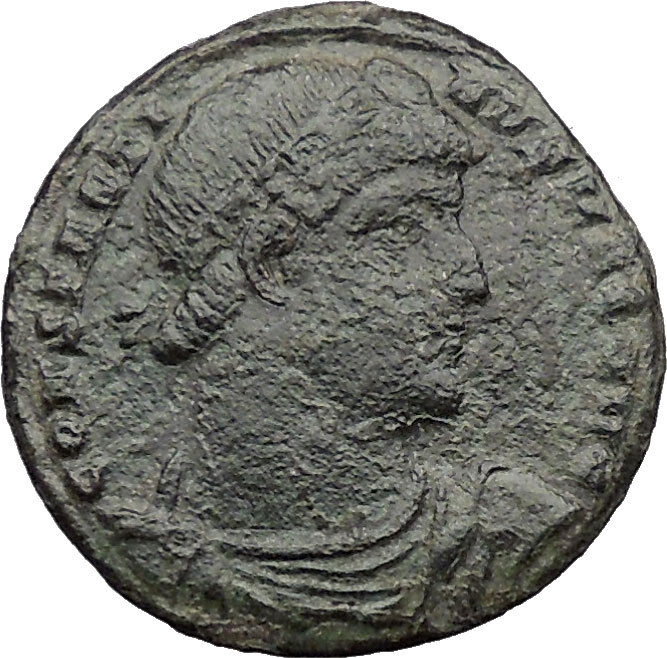|
Quintillus – Roman Emperor: 270 A.D.
Bronze Antoninianus 20mm (3.19 grams) Rome mint, 270 A.D.
Reference: RIC 18; C 28; RCV 11440
IMP C M AVR CL QVINTILLVS AVG, radiate, draped and cuirassed bust facing right.
FIDES MILITVM, Fides Militum standing left, holding a standard and a spear, Є on right.
You are bidding on the exact item pictured, provided with a Certificate of Authenticity and Lifetime Guarantee of Authenticity.
In Roman mythology, Fides (“trust”) was the goddess of trust. Her Greek equivalent was Pistis. Her temple on the Capitol was where the Roman Senate kept state treaties with foreign countries, where Fides protected them. She was also worshipped under the name Fides Publica Populi Romani (“trust towards the Roman state”). She is represented by a young woman crowned with an olive branch, with a cup or turtle, or a military ensign in hand. She wears a white veil or stola; her priests wear white.
Rome’s second king, Numa Pompilius instituted a yearly festival to Fides, and directed the priests to be borne to Her temple in an arched chariot drawn by two horses and should conduct Her services with their hands wrapped up to indicate protection.
Quintillus (Latin: Marcus Aurelius Claudius Quintillus Augustus; c. 212 – April 270) was Roman Emperor for a few months in 270.
Early life and election as Emperor
Quintillus was born at Sirmium in Pannonia Inferior. Originating from a low-born family, Quintillus came to prominence with the accession of his brother Claudius II Gothicus to the imperial throne in 268. Quintillus was possibly made Procurator of Sardinia during his brother’s reign. He was declared emperor either by the Senate or by his brother’s soldiers upon the latter’s death in 270.
Eutropius reports Quintillus to have been elected by soldiers of the Roman army immediately following the death of his brother. The choice was reportedly approved by the Roman Senate. Joannes Zonaras reports him elected by the Senate itself. Records however agree that the legions which had followed Claudius in campaigning along the Danube were either unaware or disapproving of Quintillus’ elevation. They instead elevated their current leader Aurelian as emperor.
Reign of Quintillus
The few records of Quintillus’ reign are contradictory. They disagree on the length of his reign, variously reported to have lasted as few as 17 days and as many as 177 days (about six months). Records also disagree on the cause of his death. Historia Augusta reports him murdered by his own soldiers in reaction to his strict military discipline. Jerome reports him killed, presumably in conflict with Aurelian. John of Antioch and Joannes Zonaras reported Quintillus to have committed suicide by opening his veins and bleeding himself to death. John reports the suicide to have been assisted by a physician. Claudius Salmasius pointed that Dexippus recorded the death without stating causes. All records however agree in placing the death at Aquileia.
Quintillus was reportedly survived by his two sons.
The Historia Augusta reports Claudius and Quintillus having another brother named Crispus and through him a niece, Claudia, who reportedly married Eutropius and was mother to Constantius Chlorus. Some historians however suspect this account to be a genealogical fabrication to flatter Constantine I.
Surviving Roman records considered Quintillus a moderate and capable Emperor. He was seen as a champion of the Senate and thus compared to previous Emperors Servius Sulpicius Galba and Publius Helvius Pertinax. All three were highly regarded by Senatorial sources despite their failure to survive a full year of reign.
|










